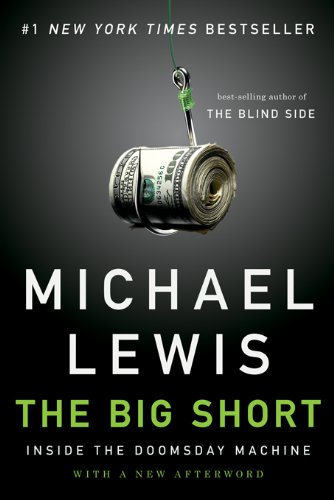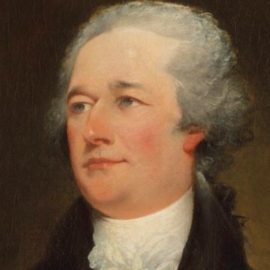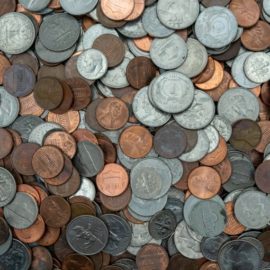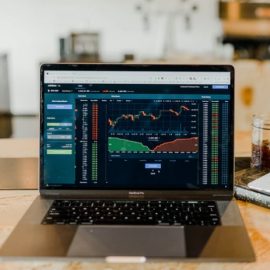

This article is an excerpt from the Shortform summary of "The Big Short" by Michael Lewis. Shortform has the world's best summaries of books you should be reading.
Like this article? Sign up for a free trial here .
Who is Steve Eisman, of The Big Short fame? What is his background in finance, and how did he profit from the 2008 financial crisis?
Steve Eisman is an investor best known for having shorted the housing market and profiting from the 2007-2008 financial crisis. In the film The Big Short, Steve Carell’s character Mark Baum was based on Steve Eisman.
We’ll cover Steve Eisman’s background, his brash personality, and how he shorted the housing market.
Steve Eisman: Financial Iconoclast
While the subprime market was growing and coming to cannibalize the wider financial system, an analyst named Steve Eisman was making a name for himself on Wall Street. Eisman had been fascinated by the existence of the subprime market and by the sheer madness of the whole enterprise ever since he’d first become aware of it in the mid-1990s. Originally an attorney, he switched gears relatively early in his career to become an analyst at Oppenheimer, a financial advisement firm.
Steve Eisman rapidly developed a reputation as a brash truth-teller, unwilling to offer up the praise and platitudes that so many financial and banking leaders expected to hear. Wall Street, he saw, was awash in flattery, in which brokers, analysts, and customers told the financial class what it wanted to hear, even when it wasn’t true. Steve Eisman tended to buck conventional wisdom. He was unafraid of telling the truth about the underwhelming performances of the companies he was tasked with analyzing—and telling it loudly.
On one occasion, Steve Eisman delivered a speech at a luncheon in which he lambasted the head of a major U.S. brokerage house (who happened to be in the audience), claiming that this man knew nothing about the business he led. Another time, Eisman crumpled up the financial statements of a Japanese real estate firm and told the CEO that they were “toilet paper.” With his often-unkempt appearance and unrestrained personality, he cut a unique figure among the smartly dressed and cautiously reserved Wall Street set.
Steve Eisman’s Moral Compass
But he was also guided by a strong moral compass and began to realize just how much of Wall Street’s business model was based on deceiving the clients whose interests it supposedly existed to serve while gouging working-class Americans out of their homes and savings. He saw these injustices even more acutely after his infant son, Max, passed away in a tragic accident. He saw that bad things could happen to anyone, anywhere, without any warning. This new ability to imagine a worst-case scenario amid a culture of unbridled (and ultimately, unfounded) optimism was to serve Steve Eisman well as the financial sector began to lose all sense of rationality during the 2000s.
The story of the Household Finance Corporation was an early indication to Eisman of just how rotten the lending business had become. In 2002, he obtained sales documents from Home Finance Corporation that indicating that they were committing fraud and cheating their customers of billions of dollars.
The impunity with which the company had acted was a genuine shock to Eisman. The CEO was being showered with wealth, when, in Eisman’s view, they should have “hung him up by his fucking testicles.” It was a revelation to Steve Eisman. The market had not punished bad actors. The incentives had not worked the way they were supposed to. His political views began to shift too, as he started his transformation from a free-market, Reaganite Republican to a progressive, populist, almost socialist Democrat. He now saw the true ethos of the system: “Fuck the poor.”
Steve Eisman’s Risky Bet
In early 2006, Deutsche employee Greg Lippmann went to Steve Eisman’s office with a proposal to bet against the subprime mortgage market—the Big Short. (Lippmann didn’t have the funds to execute the scheme on his own.) He told Steve Eisman that the underlying loans in the bonds would start to go bad even if housing prices didn’t fall—all they needed to do was stop rising. Borrowers would be unable to refinance using their homes as collateral, which would, in turn, trigger a wave of defaults. Lippmann noted that first-year defaults were already up from one percent to four percent. When the low teaser rates expired, that number would shoot up even more.
Finally, despite his skepticism, Steve Eisman did the trade with Lippmann. The logic was sound. It was spending $2 million to make $100 million. How could he not seize this opportunity?
Steve Eisman Goes to Las Vegas
In January 2007, Lippmann flew Steve Eisman and his team out to a giant annual convention of subprime lenders, speculators, and investors in Las Vegas.
Everyone Steve Eisman spoke to was skeptical about his Big Short bet. They all had the same rationale: these loans had never defaulted in the recent past, so why should they now? They were using the statistically irrelevant past to predict the unknowable future. In fact, they underrated the chance of a catastrophe in the housing market precisely because it would be such a catastrophe. They had deluded themselves into believing that nothing so cataclysmic could actually happen. In thinking this way, they were no different than gamblers riding a “hot streak” at the roulette table, fooling themselves into thinking that the good luck on the last roll of the dice had anything whatsoever to do with what happened on the next roll.
Steve Eisman earned a reputation as a troublemaker at the convention. He couldn’t help himself when he was surrounded by thousands of (as he saw it) dumb, ethically compromised financial operators who were knowingly scamming the public. At one Q&A session, he harangued the CEO of Option One, a subprime lender known for making loans to particularly un-creditworthy borrowers. Steve Eisman publicly called this man out as a liar, claiming that the default rate in their portfolio of loans wouldn’t be five percent (as the CEO claimed)—it would be far higher, especially once the teaser rates on the loans expired and homeowners got hit with the higher payments on their adjustable-rate mortgages.
Steve Eisman’s Big Short Bet Pays Off
When Morgan Stanley finally admitted defeat and exited the trade, they had lost a net $9 billion, the single largest trading loss in Wall Street history. By the end of 2007, the bank lost over $37 billion through the subprime mortgage bond and related derivatives market. In an infamous conference call with shareholders, Morgan Stanley CEO John Mack revealed that he had zero understanding of what his bond department had been up to. The game had grown too complex for even the titans of Wall Street themselves to understand. Total losses on U.S. subprime-related assets would eventually top $1 trillion.
Steve Eisman, ever the cynic, held out the longest on his Big Short. He didn’t want to just make money—he wanted to make the banks hurt. To him, the big investment banks were little more than criminal operations that had created a machine designed to prey off the hopes and dreams of ordinary Americans. In their greed and stupidity, they had brought themselves, and the entire global economy to its knees. This was more than just an investment for Steve Eisman: it was a moral crusade.
On March 14, 2008, at an event attended by a who’s-who of Wall Street figures, Steve Eisman publicly excoriated the famously bullish investor Bill Miller, who’d just spent his three minutes of speaking time extolling the virtues of Bear Stearns and explaining what a good investment the bank’s stock was. He said that Wall Street banks only failed when they became embroiled in criminal activities. But as Eisman was speaking, refuting Miller’s laughably optimistic views of the market, the collection of cell phones and Blackberrys in the room started going off like mad.
Bear Stearns stock was in a freefall. In the half-hour or so that Steve Eisman spoke, the stock fell by more than 20 points. There had been a classic run on the bank as investors scrambled to move their money away from subprime assets—which made up most of Bear’s balance sheet by this point. By Monday, it would be gone, sold to J.P. Morgan for $2-per-share. That same day, Merrill Lynch would sell itself to Bank of America, after losing $55.2 billion. In this chaos, Steve Eisman was vindicated: he had found a way to profit from the foolishness of the bankers he despised with his Big Short.
(Shortform note: Steve Eisman’s fund, FrontPoint, is believed to have more than doubled in value from $700 million to $1.5 billion through its bet against the housing market.)
———End of Preview———

Like what you just read? Read the rest of the world's best summary of "The Big Short" at Shortform . Learn the book's critical concepts in 20 minutes or less .
Here's what you'll find in our full The Big Short summary :
- How the world's biggest banks contributed to the 2008 financial crisis, greedily and stupidly
- How a group of contrarian traders foresaw the bubble popping, and made millions from their bets
- What we learned from the 2008 crisis - if anything






